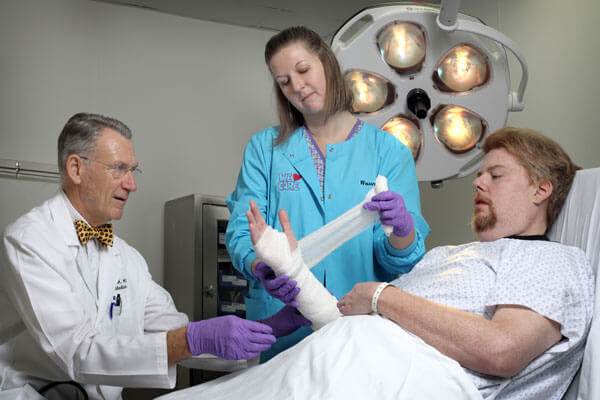A PICC line is a long, thin tube that’s inserted through a vein in your arm and passed through to the more prominent veins near your heart. This type of line allows for administering fluids, medications, or blood products over an extended period. PICC lines are commonly used to provide treatment for cancer patients and those receiving long-term dialysis. If you’re scheduled to have a PICC line placed, you should make sure that you find a specialist in PICC Line placement in El Paso to ensure that everything goes as needed. Here are some things you need to know about this treatment.
What to Expect
Your doctor will likely give you a sedative before the PICC line placement to make you more comfortable. Once you’re sedated, a specialist will insert the tube into your vein and pass through to the more prominent veins near your heart. You may feel some pressure or discomfort during insertion, but this should only last for a few seconds. Once the line is in place, you may feel a sense of relief.
The PICC line will be connected to a bag that will collect your blood or other fluids as they’re administered. You may experience some swelling or bruising around the insertion site, but this is normal and should fade in a few days.
How to Prepare
If you’re scheduled to have a PICC line placed, there are a few things you can do to prepare. Be sure to eat a light meal before your appointment and avoid drinking any alcohol. You may also want to ask someone to drive you home after the procedure.
If you’re receiving treatment with a PICC line, be sure to follow your doctor’s instructions carefully. This will help ensure that you get the most benefit from your treatment.
What to Expect After Placement
Once the PICC line is in place, you’ll need to take care of it properly. You’ll need to keep the insertion site clean and dry, and you’ll also need to avoid bending your arm above the elbow. You should also avoid strenuous activities, such as weightlifting or running.
If you experience any pain, swelling, redness, or drainage at the insertion site, be sure to contact your doctor. These could be signs of infection and require immediate attention.
Are There Any Risks Involved?
There are some risks associated with PICC line placement, including infection and blood clotting. However, these risks are relatively low and can be minimized by carefully following your doctor’s instructions.
Some patients also experience discomfort or skin irritation around the insertion site. This may come up due to the type of fluids or medications administered through the line. If you experience any unusual symptoms, be sure to contact your doctor.
To avoid any potential infections, you should keep the insertion site clean and dry. You may also want to consider using a bandage to protect it from dirt and bacteria.
In summary, if you’re scheduled to have a PICC line placed, be sure to find a specialist. Ensure you eat a light meal before your appointment and avoid drinking alcohol. You should also ask someone to drive you home after the procedure. Be sure to follow your doctor’s instructions carefully and contact them if you experience any problems.




